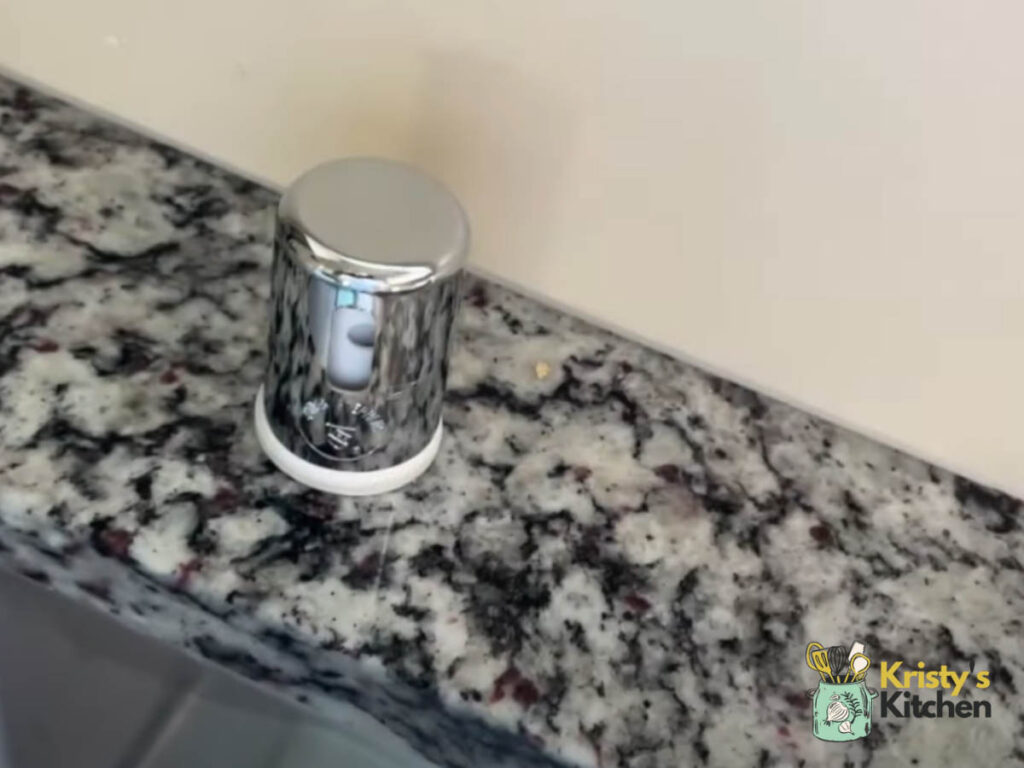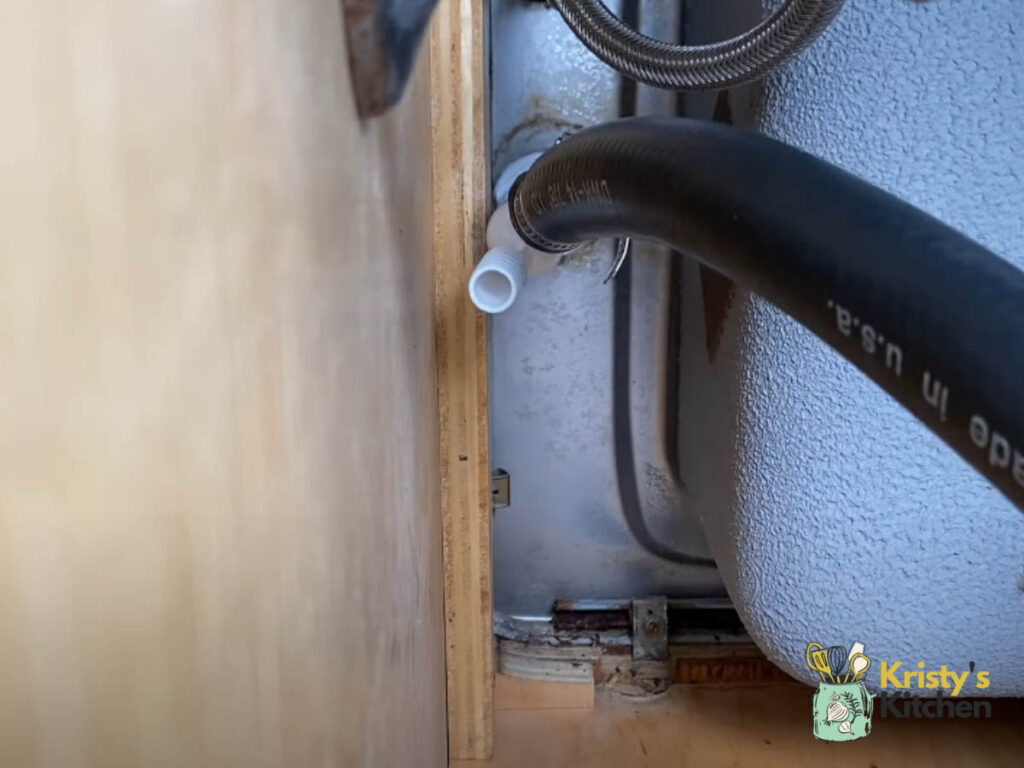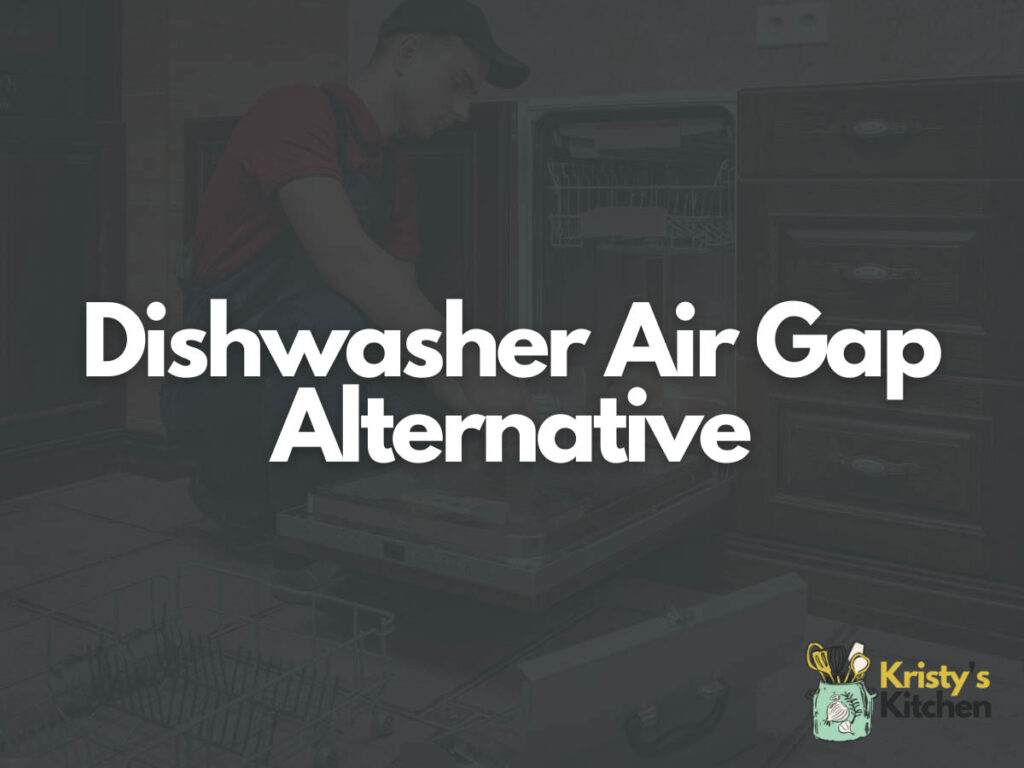Do You Need An Air Gap For Dishwasher? Full Breakdown
In our everyday kitchens, the dishwasher has become a true time-saver, waving goodbye to the endless dishwashing routine.
But let’s dive deeper into one part of this kitchen workhorse that might not grab the spotlight – the dishwasher air gap.
In this post, I’ll walk through its importance, installation process, and even explore some alternatives. So, let’s get started with the basics.
Do You Need an Air Gap for a Dishwasher?

Yes, you need an Air Gap for a Dishwasher. It plays a vital part in keeping your kitchen clean and safe.
So, why do you need an air gap for a dishwasher? Let me explain.
The dishwasher air gap, that small device near your sink, is there to prevent dirty water from flowing back into your dishwasher and messing up your freshly cleaned plates.
It’s a barrier that stops cross-contamination and maintains the cleanliness of your kitchen’s plumbing system.
Think of it as a vent for your dishwasher’s drainage.
Where Would An Air Gap Be On A Dishwasher?
You don’t need to be a plumbing expert to find the air gap.
It’s often right on your countertop or sink deck – a functional piece that’s ready to prevent any unwanted surprises.
It’s a visible component with a cylindrical or tower-like shape.
The air gap is installed above the sink’s flood-level rim, ensuring that any potential backflow is directed away from your dishwasher.
How Does A Dishwasher Air Gap Work
The dishwasher air gap might seem complex, but it’s quite simple.
It creates a physical gap between the dishwasher’s drain line and the kitchen sink’s drain line.
When water is drained from the dishwasher, it flows into the air gap first.
From there, it is directed through a plastic tube into the sink’s drain pipe or garbage disposal.
This one-way flow prevents any contaminated water from re-entering the dishwasher.
How To Install Air Gap For Dishwasher?

Installing an air gap doesn’t require you to be a plumbing expert – just some basic tools and patience.
Here’s a step-by-step guide:
- Find the special hole on your countertop for the air gap. It might have a cover on it.
- If there’s a cover, take it off gently and keep it aside.
- If there’s no hole, make one using a drill. Do it near the sink’s edge, and use tape to protect your countertop. If your countertop is fancy, get help from a pro.
- Connect the dishwasher’s hose to the smaller part of the air gap.
- Attach a smaller tube securely to the air gap using clamps.
- You can connect the air gap in two ways: if it’s going to the drain, use a slightly bigger tube and clamps; if it’s going to the garbage disposal, attach a tube to its side with a clamp.
- Slide the air gap through the hole in the counter from below. You might need someone to hold it steady.
- Tighten the air gap to the counter using a nut.
- Put back the cover to make it look nice.
- Run the dishwasher and check for leaks around the air gap and tubes.
- Make sure water isn’t getting out from the air gap, drain, or garbage disposal connections, causing dampness under the sink.
How To Hide Dishwasher Air Gap
The dishwasher air gap, while essential, might not be the most aesthetically pleasing component in your kitchen.
Thankfully, there are simple ways to tuck it away while keeping things neat.
- Get a Cover: Look for covers that match your countertop or sink’s material. These covers fit neatly over the air gap, making it blend in. Some companies offer covers that not only hide the gap but also bring in a dash of style. You’ll find various designs and materials to choose from.
- Get Creative: Place items like a soap dispenser, a small plant, or decorative dishes around the air gap. It’s a simple way to divert attention from it.
- Do It Yourself: If you’re up for a mini-project, create a custom cover using wood, tiles, or metal. It’s a bit of crafting that adds your personal touch.
Dishwasher Air Gap Alternative

Though the air gap is the go-to for preventing issues, there are alternatives you could think about.
Remember, these might not offer the same level of protection, but they can work in certain cases:
- High Loop Installation: This means you route the dishwasher hose to create a loop under the sink before connecting it. It’s not a physical barrier like the air gap, but it helps stop some issues.
- Check Valve: Installing a check valve in the dishwasher’s drain line can stop water from going back. Keep in mind that you’ll need to keep an eye on the valve’s condition.
- Plumbing Vent Pipe: If you have a plumbing vent pipe, it could work as an alternative. Talk to a plumber to see if it suits your kitchen setup.
FAQs
Do you need an air gap for a Bosch dishwasher?
Yes, Bosch or any other dishwasher typically requires an air gap for proper plumbing and backflow prevention.
Do you need a dishwasher air gap in Wisconsin?
Yes, many plumbing codes in Wisconsin and other states mandate the use of a dishwasher air gap for hygiene and safety.
Do you need an air gap for dishwasher in California?
Absolutely, California’s plumbing regulations often call for a dishwasher air gap to prevent contamination.
Does Texas require an air gap for dishwasher?
Yes, in line with the other states, Texas usually requires an air gap to ensure proper plumbing and prevent backflow.
Do you need a dishwasher air gap with garbage disposal?
Yes, having a garbage disposal doesn’t replace the need for an air gap. Both serve different purposes – disposal for food waste, and air gap for preventing contamination.
Final Thoughts
Now, you’re equipped with insights into concealing your dishwasher air gap and exploring alternatives.
Balancing aesthetics and functionality is the name of the game here.
Whether you pick a cover that suits your kitchen’s style, get creative with a DIY touch, or ponder over alternatives like the high loop or a check valve, the ball is in your court.
Remember, always factor in local plumbing codes and the potential risks.
Safety matters even when you’re sprucing up your kitchen’s look.
With options on the table, a clear grasp of why that unassuming air gap is significant, and a few tricks up your sleeve, you’re ready to make a choice that ticks the practicality and visual appeal boxes.
After all, a clean, efficient kitchen is a true win-win!
